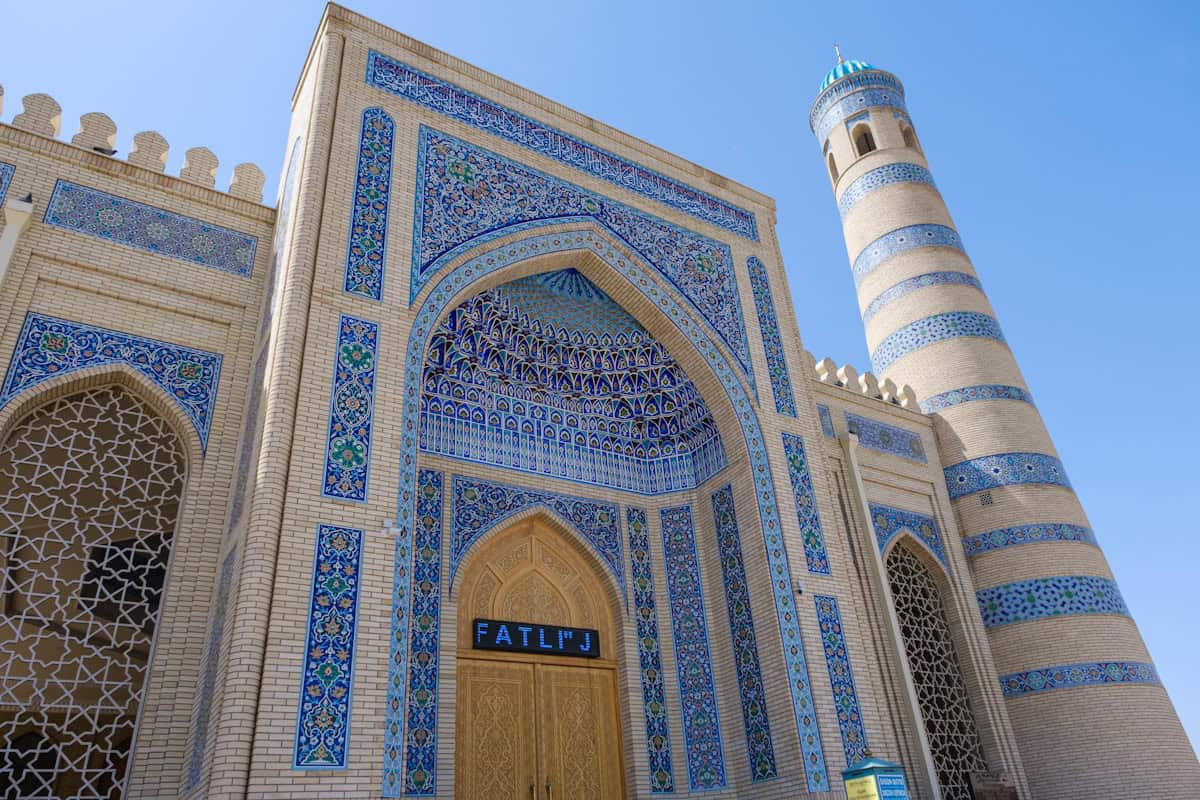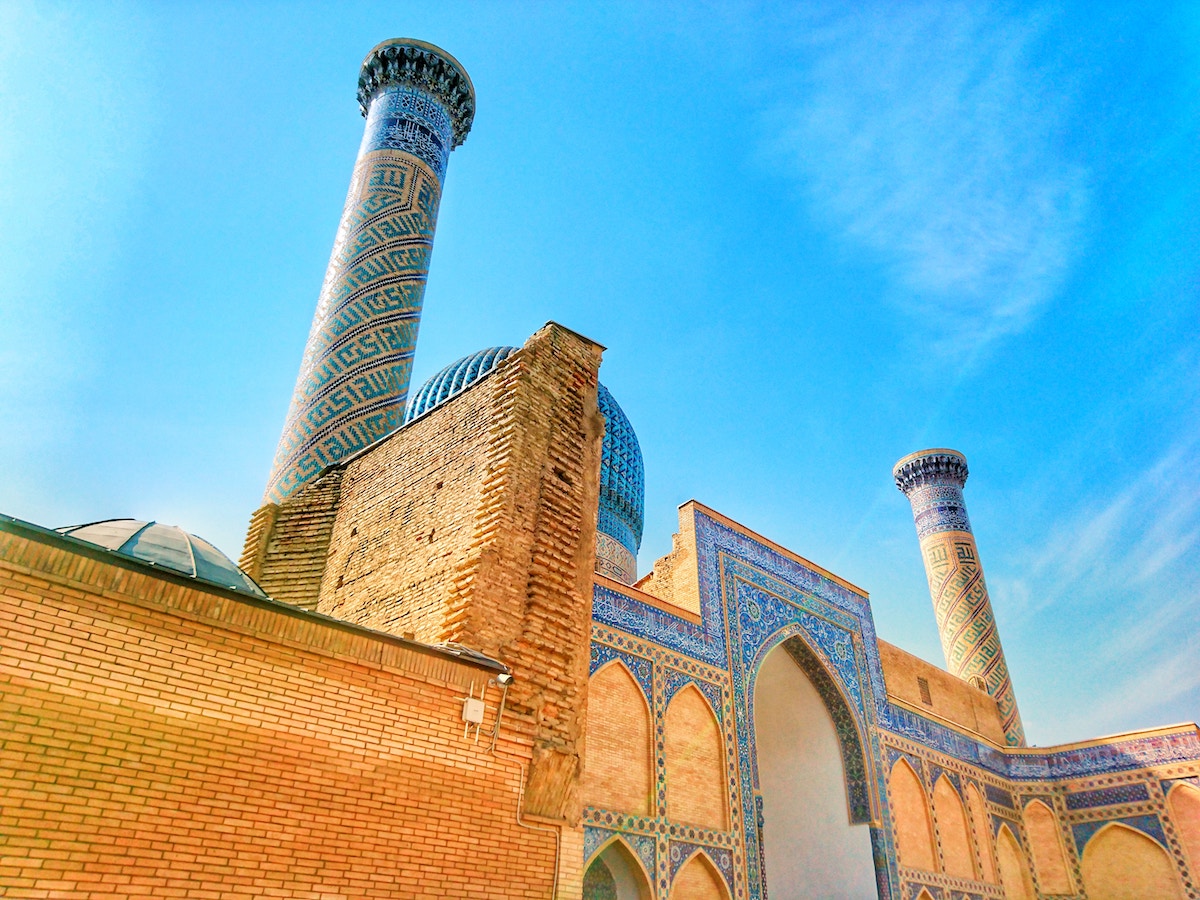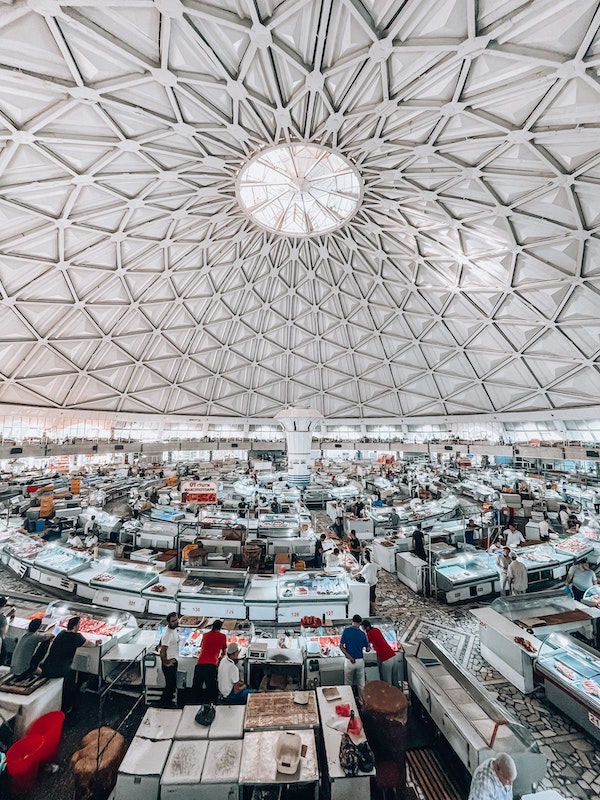
Exploring Uzbekistan’s Silk Road Cities: Samarkand, Bukhara, Khiva & Tashkent
By: Sarah Stone
Skip to Section
When you think of embarking on an adventure that transcends time, few places ignite the imagination like the Silk Road—and in particular, the historic cities of Uzbekistan. The ancient trade route connecting East and West brought not only goods but also a mixing of cultures.
Samarkand, one of Central Asia’s oldest continually inhabited cities, is often the first stop on any Uzbekistan Silk Road tour. It dazzles with the majestic Registan Square, the heart of the city for centuries, surrounded by ornate madrasahs with their iconic turquoise domes. Bukhara offers a journey back in time with its well-preserved city center, historical trade domes, and the monumental Ark fortress.
Khiva, a literal open-air museum, is a perfectly preserved example of a typical Central Asian feudal city. The walled inner city, Itchan Kala, enchants with its blue-tiled Kalta Minor Minaret and the grandeur of Toshhovli Palace. And then there is Tashkent, the capital of Uzbekistan, marrying modern urban sophistication with deep historical roots. From the bustle of Chorsu Bazaar to the tranquility of the 16th-century Kukeldash Madrasah, Tashkent offers a slice of life on the Silk Road in a contemporary setting.
As a traveler, your journey to these Silk Road cities of Uzbekistan would be a fantastic blend of history, architecture, culture, and cuisine. Whether you’re a history enthusiast, an architecture lover, a foodie, or just an avid explorer, Uzbekistan’s Silk Road cities have something to offer you.
Samarkand

Photo by Sultonbek Ikromov on Unsplash
Samarkand has a history that spans over 2,500 years, making it one of the most ancient cities in the world. Its name means “stone fort” or “rock town.” The city’s historic center is a UNESCO World Heritage site due to its key role in the Silk Road and its unique mix of cultures over the centuries.
A few highlights you can’t miss:
- Registan Square: This is Samarkand’s crown jewel. Once the city’s commercial center and likely a plaza for public announcements, the square is now known for its unique ensemble of three large madrasahs: Ulugh Beg, Sher-Dor, and Tilya-Kori. They’re adorned with stunning mosaics and intricate tile work, demonstrating the zenith of Islamic art and architecture.
- Gur-e-Amir Mausoleum: This mausoleum is significant as the resting place of Timur (Tamerlane), the Turkic conqueror who made Samarkand the capital of his empire in the 14th century. The mausoleum’s architectural style, particularly its fluted dome, became an influential model for future Mughal architecture, such as the Taj Mahal.
- Shah-i-Zinda: Meaning “The Living King,” this necropolis is associated with the legend of Qusam ibn-Abbas, the cousin of the Prophet Muhammad, who is said to have brought Islam to this area. The complex includes a series of tombs and mausoleums, known for their tilework, and dates from the 11th to 19th centuries.
Bukhara

Photo by Max Tcvetkov on Unsplash
Bukhara is another city with a history stretching back over 2,000 years. Its city center is a UNESCO World Heritage site and is often described as a living museum due to its well-preserved buildings and monuments.
A few highlights you can’t miss:
- Trading Domes: The city’s historical commercial areas consist of a series of domed bazaars, which were once centers for trade along the Silk Road. These include the Toki Sarrafon (Moneychangers Bazaar), Toki-Telpak Furushon (Cap Makers Bazaar), and Tim Abdulla (a covered market).
- Kalon Minaret and Mosque: The Kalon Minaret, built in 1127, is a striking symbol of Bukhara. It was one of the few structures that remained standing when Genghis Khan sacked the city. Adjacent to the minaret is the large Kalon Mosque, which can accommodate up to 12,000 people.
- The Ark of Bukhara: This massive fortress was a royal residence for the emirs that ruled the city. With origins dating back to the 5th century AD, the Ark is a town within a town, containing royal courts, treasuries, a library, and a mosque.
Khiva

Photo by Farkhod Saydullaev on Unsplash
Known as an open-air museum, Khiva is divided into two parts: the ancient inner town Itchan Kala and the more modern outer town Dichan Kala.
A few highlights you can’t miss:
- Itchan Kala: This is Khiva’s walled inner city. With its impressive gates, it contains more than 50 historic monuments and hundreds of houses dating back to the 18th century.
- Kalta Minor Minaret: One of the most famous landmarks in Khiva, the Kalta Minor Minaret is easily recognizable by its short, squat shape and the vibrant blue tiles that cover its exterior. Originally planned to be the tallest minaret in the Islamic world, construction was never fully completed.
- Kunya Ark: This was the former fortress and residence of the rulers of Khiva, constructed in the 17th century. It houses a mosque, a harem, a mint, and the Khan’s private quarters.
- Toshhovli Palace: Built in the 19th century, the palace has 163 rooms, which include the Khan’s living quarters, two stunning courtyards, and a beautiful reception hall decked out with tiles, carvings, and ornate majolica.
Tashkent
Tashkent, the capital of Uzbekistan, is a fascinating blend of ancient history and Soviet-era architecture, due to the reconstruction following a major earthquake in 1966. Despite its modern facade, Tashkent still retains a number of historic Silk Road sites.
A few highlights you can’t miss:
- Kukeldash Madrasah: Located near the Chorsu Bazaar, the Kukeldash Madrasah is one of the few remaining structures from the pre-Russian era in Tashkent. The 16th-century madrasah, or Islamic school, is still operational today.
- Chorsu Bazaar: This is one of the oldest markets in the region and a hub of daily life in Tashkent. “Chorsu” means “crossroads” or “four streams,” indicating a central location in the city. Underneath its massive turquoise dome, you’ll find everything from spices, dried fruits, and nuts to traditional Uzbek clothes, ceramics, and jewelry.
- Khast-Imam Complex: Home to several religious structures, the main attraction is the Muyi Muborak Madrasah that houses the Uthman Quran, considered one of the oldest Qurans in the world.
These cities offer a wonderful combination of history, architecture, and a bright culture. They offer a unique look into the ancient world—something every traveler can admire!
About the Author
 As the editor-in-chief of Frayed Passport, my goal is to help you build a lifestyle that lets you travel the world whenever you want and however long you want, and not worry about where your next paycheck will come from. I've been to 20+ countries and five continents, lived for years as a full-time digital nomad, and have worked completely remotely since 2015. If you would like to share your story with our community, or partner with Frayed Passport, get in touch with me using the form on our About page.
As the editor-in-chief of Frayed Passport, my goal is to help you build a lifestyle that lets you travel the world whenever you want and however long you want, and not worry about where your next paycheck will come from. I've been to 20+ countries and five continents, lived for years as a full-time digital nomad, and have worked completely remotely since 2015. If you would like to share your story with our community, or partner with Frayed Passport, get in touch with me using the form on our About page.Featured image by Farhodjon Chinberdiev on Unsplash
Information published on this website and across our networks can change over time. Stories and recommendations reflect the subjective opinions of our writers. You should consult multiple sources to ensure you have the most current, safe, and correct details for your own research and plans.
Frayed Passport is a participant in the Amazon Associates Program, an affiliate advertising program designed to provide a means for sites to earn advertising fees by advertising and linking to Amazon.com. We also may share links to other affiliates and sponsors in articles across our website.





